Madsen 1935 heavy anti-tank rifle
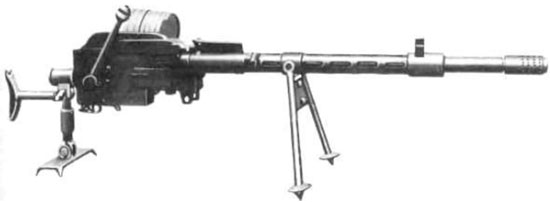
Madsen 1935 (in the PTR version)
on a bipod and with rear support
In the first half of the 1930s, the Danish company Dansk Rekyl Riffel Syndikat A/S (later known as DISA (Dansk Industri Syndikat A/S)) developed a large-caliber automatic anti-tank rifle (ATR) as part of a program to create infantry anti-tank weapons, which was adopted by Denmark in 1935 with the designation “Madsen 1935”.
The operation of the automatic system of this weapon is based on a recoil system with a short barrel stroke and a vertical rotary locking bolt.
| Caliber, mm | 20x120 Madsen |
|---|---|
| Length, mm | 1824 |
| Barrel length, mm | 1200 |
| Weight, kg |
- bodies
- with bipod and back gauge
- with field carriage
- with universal carriage|55
62
100
265|
|Magazine, number of cartridges|15, 30, 40, 60|
|Rate of fire, rds/min|8 - 10 (singles)
120 (automatic)|
|Sighting range, m|1000|
|Muzzle velocity, m/s|730|
|Armor penetration,
(distance / angle of encounter / penetration)|100m /90o / 42mm
300m /90o / 37mm
500m /90o / 32mm
1000m /90o / 15mm|
The cocking handle in the form of a lever is located on the right side of the receiver of the weapon.
The trigger is located under the receiver.
The gun is fed with ammunition from a drum magazine with a capacity of 15 rounds adjacent to the left side of the weapon. Magazines with a capacity of 30, 40 and 60 rounds were also created and could be used.
The anti-tank rifle was designed to fire single shots and bursts. When firing in bursts, the probability of hitting the target was very low, so this mode of fire was used only in exceptional cases. The practical rate of fire of single fire does not exceed 8-10 rounds per minute. The rate of fire in bursts reaches 500 rounds per minute, and the practical rate of fire is 120 rounds per minute.
A powerful muzzle brake is located on the barrel of the weapon.
The sights consist of a rotary sight. The sighting range is 1000 meters.
A folding bipod is attached to a metal stock with holes.
At the rear of the receiver there is an additional, height-adjustable support and shoulder rest.
The anti-tank rifle was serviced and carried by a crew of two people.
The Madsen 1935 was used as a universal weapon. According to various classifications, it was called a heavy anti-tank rifle or a light automatic cannon, the purpose of which was to combat aircraft and conduct anti-tank warfare at close range. A 20x120 mm cartridge was developed for this weapon.
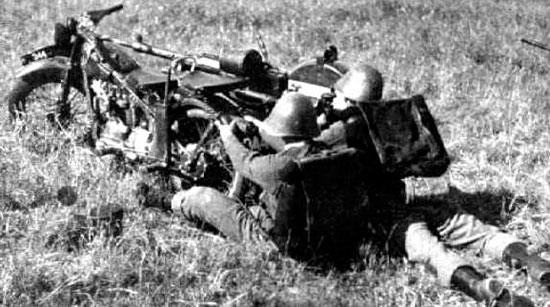
Madsen 1935
mounted on a motorcycle

Madsen 1935 (in the PTR version),
mounted on a field carriage
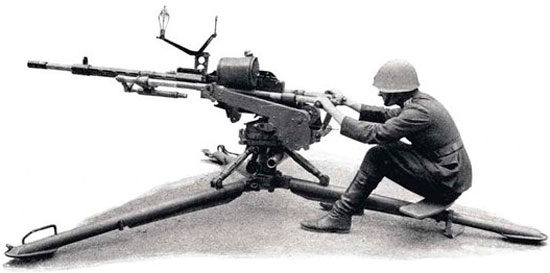
Madsen 1935 (in the anti-aircraft gun version),
mounted on a field carriage
As an anti-tank rifle, the weapon had an auxiliary, height-adjustable rear stop and was installed on a bipod. In the form of an automatic cannon, it was mounted on a field carriage and placed on two folding bars at the rear and a single support at the front. In the form of a light gun, it was mounted on a universal carriage. In motorized units, weapons were installed on the sidecar of an army motorcycle. Each infantry company had an escort platoon, which had 6 units of these weapons.
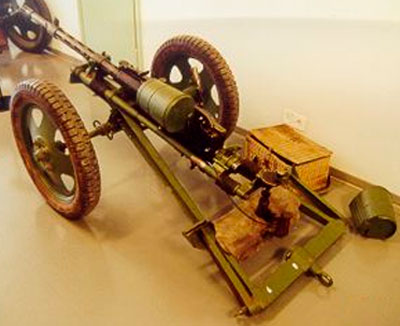
Madsen 1935 (automatic cannon version)
on a wheeled carriage
For the mid-1930s, the Madsen 1935 was an excellent weapon for combating armored targets. At an angle of 90°, its armor penetration was 42 mm at a distance of 100 meters, 37 mm at a distance of 300 m, 32 mm at a distance of 500 meters and 15 mm at a distance of 1000 meters.
However, in addition to the advantages, this weapon as an anti-tank missile had a number of disadvantages. The design was relatively complex, the model itself was quite heavy, and the location of its points of impact was unstable. The ability to transport it and maneuverability during battle were limited. As an anti-tank rifle, this weapon did not correspond to the tasks assigned to it, but justified itself as a version of an anti-aircraft weapon.
In addition to the fact that this weapon was in service with the Danish army, it was exported and used by the armies of many countries during World War II. After the war, it was in service with small states outside Europe, in particular in Latin America and Africa, and in some of them it was in operation until the mid-1980s. For the first time in combat, this weapon was used by the Finnish armed forces in the Winter War of 1939-1940 against the Soviet Union.
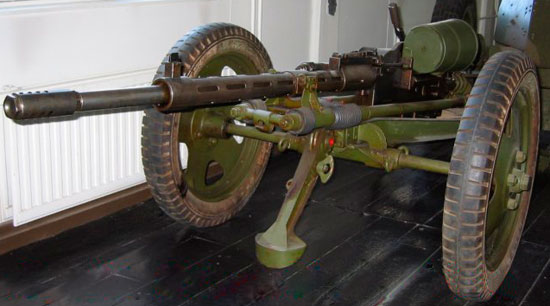
Madsen 1935 (automatic cannon version)
on a wheeled carriage